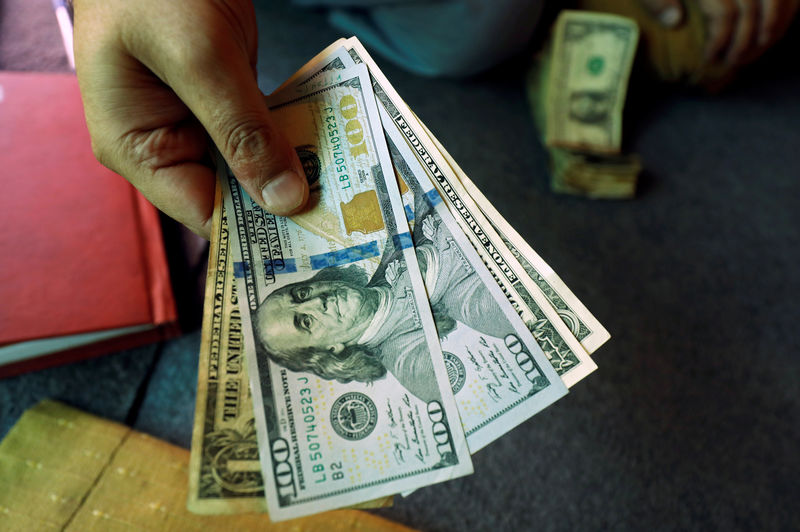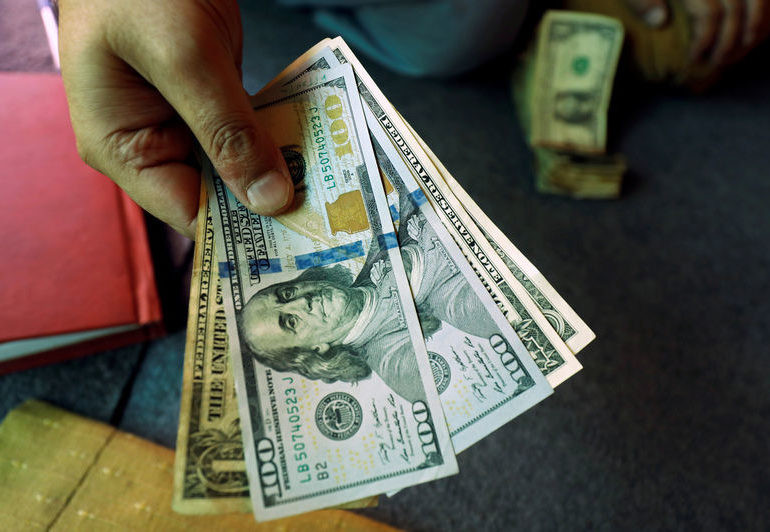 © Reuters.
© Reuters. By Gina Lee
Investing.com – The dollar was up on Friday morning in Asia, even as downbeat U.S. jobs figures and a stubbornly dovish U.S. Federal Reserve prompted investors to unwind some bets on the greenback and drove it towards its worst week of the year.
The that tracks the greenback against a basket of other currencies inched up 0.08% to 92.140 by 11:30 PM ET (3:30 AM GMT). The index is parked near a two-week low after falling 1% during the past week.
The pair inched up 0.05% to 109.30.
The pair edged down 0.16% to 0.7640 and the pair inched down 0.04% to 0.7050.
The pair inched up 0.03% to 6.5526, with China releasing better-than-expected March consumer and producer price indexes data earlier in the day. The CPI contracted 0.5% while growing 0.4% , and the grew 4.4% year-on-year.
The pair inched up 0.02% to 1.3735.
Investors remained cautious about the dollar, however.
“In short, the energy has gone out of the dollar’s first-quarter rebound, just as it has gone out of the bond sell-off,” Societe Generale (OTC:) head of FX strategy Kit Juckes told Reuters.
Meanwhile, the euro and yen are poised for their largest weekly percentage gains in five months, with the euro up 1.4% and the yen up 1.3% against the dollar this week.
In the U.S., Thursday’s figures said that unexpectedly rose to 744,000, more than the 680,000 claims in forecasts prepared by Investing.com and the 728,000 claims filed during the previous week.
The Fed continued to maintain its dovish stance on monetary policy, with Chairman Jerome Powell telling an International Monetary Fund event on Thursday that the stance would only shift after a few consecutive months of positive data. Powell’s colleague and St. Louis Fed president added at a separate Southern Illinois University gathering that the central bank should not even discuss changes until there are clear signs that the COVID-19 pandemic is over.
The disappointing jobs data and the comments from the Fed saw Treasuries rise, pushing benchmark 10-year yields to a two-week low of 1.6170% and further denting the dollar’s appeal. The dollar’s loss was risk currencies’ gain, with the AUD and NZD also supported by the broadly upbeat mood in stocks.
“Markets (are) re-thinking the U.S. dollar exceptionalism view… stronger U.S. growth should benefit all global cyclical assets, including the NZD and Asian currencies, and this appears to be the theme now at play,” ANZ Bank analysts said in a note.
Fusion Media or anyone involved with Fusion Media will not accept any liability for loss or damage as a result of reliance on the information including data, quotes, charts and buy/sell signals contained within this website. Please be fully informed regarding the risks and costs associated with trading the financial markets, it is one of the riskiest investment forms possible.

